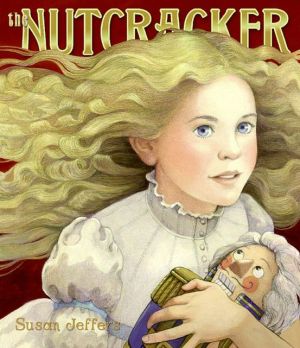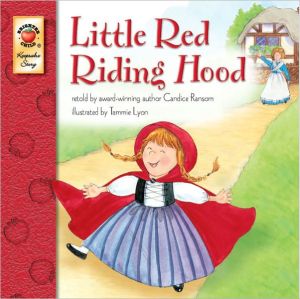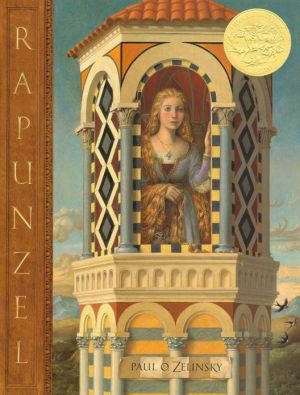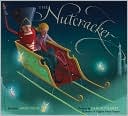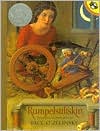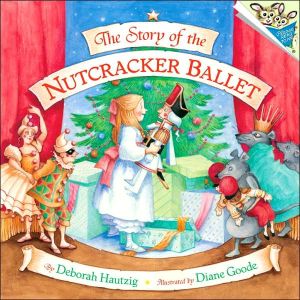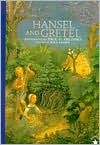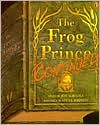The Fisherman and His Wife
Caldecott Honor-winning artist Rachel Isadora brings another fabulous fairy tale to brilliant life with her stunning collages. The Brothers Grimm story of the kind fisherman who catches an enchanted fish, and his greedy wife who always wants more, is perfect for these 'give-me' times.\ Rachel Isadora's captivating collage-style artwork, featuring the African landscape and the increasingly turbulent ocean, provides a wonderful new backdrop for this classic story.\ \ \...
Search in google:
Caldecott Honor—winning artist Rachel Isadora brings another fabulous fairy tale to brilliant life with her stunning collages. The Brothers Grimm story of the kind fisherman who catches an enchanted fish, and his greedy wife who always wants more, is perfect for these “give-me” times. Rachel Isadora's captivating collage-style artwork, featuring the African landscape and the increasingly turbulent ocean, provides a wonderful new backdrop for this classic story.Publishers WeeklyA robust translation of the classic tale, with Zemach's charmed paintings of the carnival-like events. Ages 3-up. (September)
\ Publishers Weekly\ - Publisher's Weekly\ A robust translation of the classic tale, with Zemach's charmed paintings of the carnival-like events. Ages 3-up. (September)\ \ \ \ \ Children's LiteratureAGERANGE: Ages 4 to 8. \ Isadora sets the traditional fairy tale in Africa, as she has with others. But the story remains the same. A fisherman who lives with his wife in a pigsty releases a flounder he has caught--the fish has surprised him by claiming to be a prince. When he returns home, his wife sends him back to demand a hut in payment. He finds it there when he comes home. This satisfies his greedy wife for only a few days, until she tells him she wants a stone castle. After she has that, she decides she must be king. Then she demands to be emperor, and then pope. Each time the reluctant fisherman returns to the sea, it becomes darker and angrier. When his wife wants to be God, the flounder sends him back home where the pigsty awaits. Isadora cuts her shapes from a large variety of prepared papers. Here and there, mostly to clothe the wife, she uses pieces of pre-printed papers. With oil paints and this treasure of papers she tells the story in visually stimulating double-page scenes. Those depicting the increasingly agitated sea are particularly moving; the early aquamarines are replaced by dark greens and finally by streaky black crashing waves, as the sun turns from friendly red to bilious green, projecting the mounting anger of the fish. The setting and clothing suggest Africa; the lesson is universal. Reviewer: Ken Marantz and Sylvia Marantz\ \ \ \ School Library JournalK-Gr 4- As she did with The Twelve Dancing Princesses and The Princess and the Pea (both Putnam, 2007), Isadora has taken a tale of European origin and set it against a generic African backdrop, with no country, tribe, or culture specified. This is problematic as such treatment does nothing to enlighten children about the rich diversity that exists on this vast continent. This is a separate issue from the quality of Isador's illustrations, which meet her usual standards. Using oil paints, printed paper, and palette paper, she has created dramatic, textured collages, intense in color and rich in detail. The spreads reflect an increasingly dark and angry sea as the wife's demands become more and more outrageous. The text is spare and minimal, with none of the lyrical language found in other retellings, such as Randall Jarrell's classic (Farrar, 1980; o.p.) with breathtaking illustrations by Margot Zemach. Younger readers may find this version more accessible, but all of the drama is in the art.-Grace Oliff, Ann Blanche Smith School, Hillsdale, NJ\ Copyright 2008 Reed Business Information.\ \ \ \ \ School Library JournalGr 2-4-- An outstanding mixed-media production of the classic tale of greed and granted wishes. The book alone warrants purchase. The language retains an old-world flavor through its formal and evocative wording, while presenting the story in a thoroughly accessible and comprehensible manner. Metaxas has resisted including editorial comments that might have compromised the intellectual challenge of the tale's moral, unlike some other versions currently in print. Inky black cut-out silhouettes set against vivid single- color backgrounds depict the action of the tale. While the text is fairly traditional, the illustrations are surprising and refreshing in their interpretation of the tale. Bryan has enhanced the exaggerations in the story with absurd anachronistic touches such as an old-fashioned pipe stove next to one of those cat clocks with a swinging-tail pendulum popular in the '50s. Her fisherman's hovel even sports a television and electric lamps. The audio cassette recording consists of a mesmerizing reading by actress Jodie Foster with a hauntingly beautiful sound track by Van Dyke Parks. An especially satisfying sensory experience. --Dorothy Houlihan, White Plains Pub . Lib . , NY\ \ \ \ \ Kirkus ReviewsContinuing her career through the classic fairy tales, Isadora turns to the familiar story of overweening greed for her latest adaptation. As with Princess and the Pea (2007) and Twelve Dancing Princesses (2007), she relocates the European tale to an unspecified African shore, employing her Eric Carle-like collage technique of placing broadly painted cut-outs against a white background. As the story runs its course, the wife becoming greedier and greedier and the flounder waxing angrier and angrier, the painted ocean modulates from turquoise to gray and stormy, taking over the page in nicely terrifying fashion as jagged blades of rain stab its surface. This tale adapts to its new setting somewhat better than her previous efforts, perhaps because of the universality of the themes, perhaps because the tight focus on the two characters allows them to develop fully. As the wife declares that being Pope isn't good enough-she wants to become God-she and her husband appear silhouetted against a rising African sun, God's creation surrounding her-a nicely ironic image beautifully executed, making this offering fresh and welcome. (Picture book/fairy tale. 4-8)\ \

